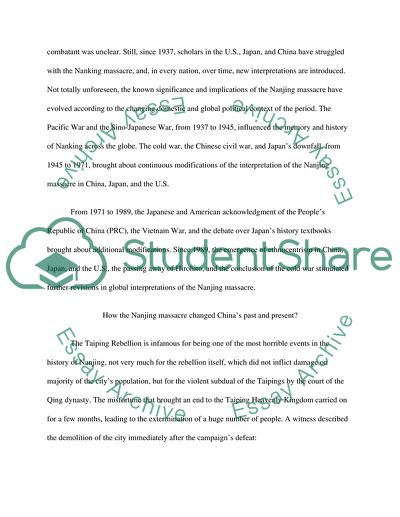Cite this document
(“Nanking massacre Essay Example | Topics and Well Written Essays - 2500 words”, n.d.)
Retrieved from https://studentshare.org/history/1689305-nanking-massacre
Retrieved from https://studentshare.org/history/1689305-nanking-massacre
(Nanking Massacre Essay Example | Topics and Well Written Essays - 2500 Words)
https://studentshare.org/history/1689305-nanking-massacre.
https://studentshare.org/history/1689305-nanking-massacre.
“Nanking Massacre Essay Example | Topics and Well Written Essays - 2500 Words”, n.d. https://studentshare.org/history/1689305-nanking-massacre.


